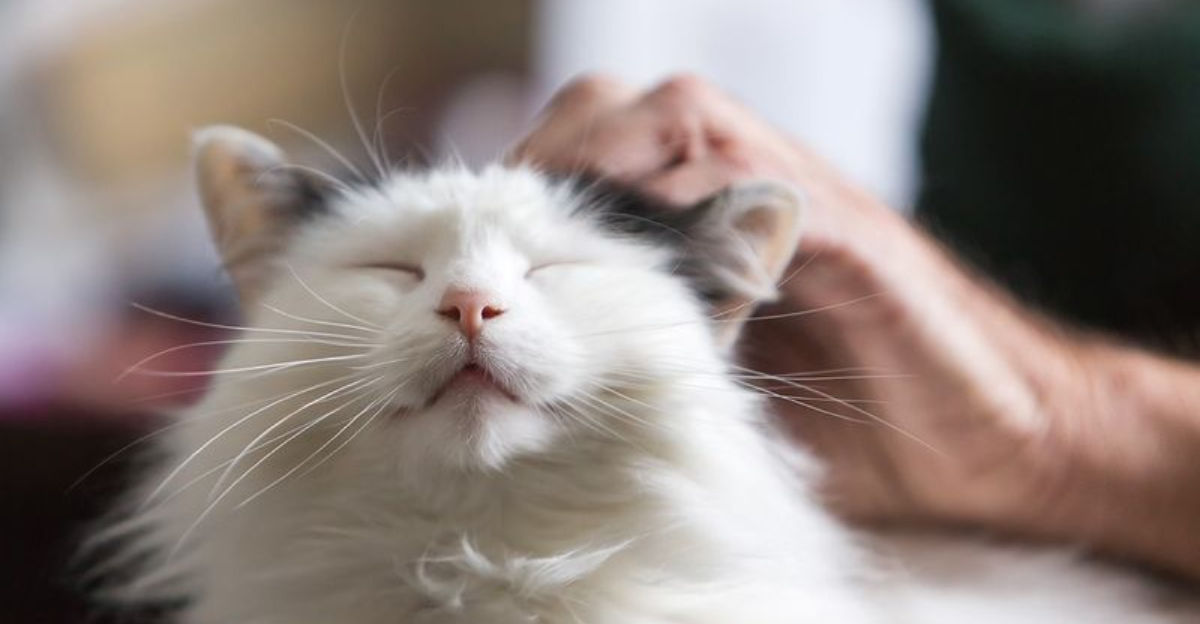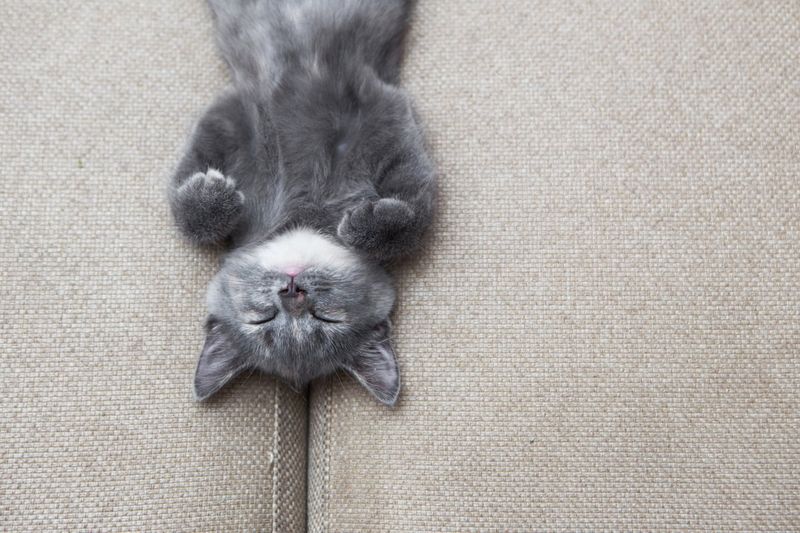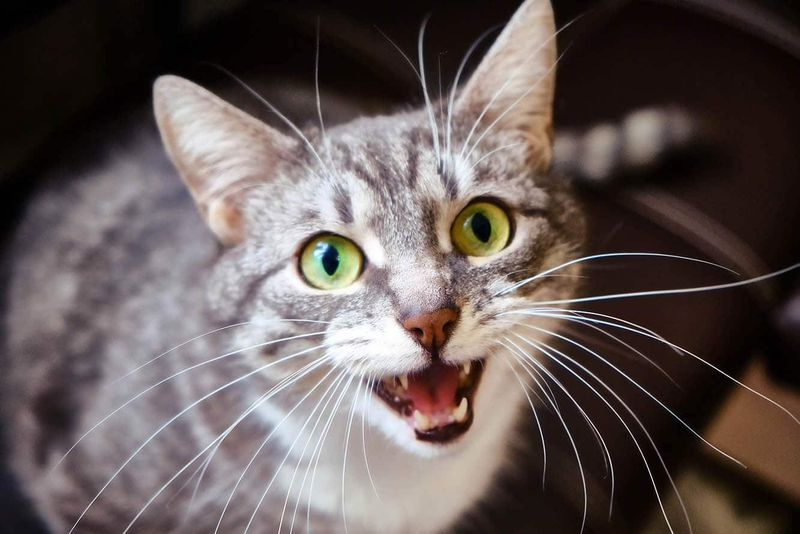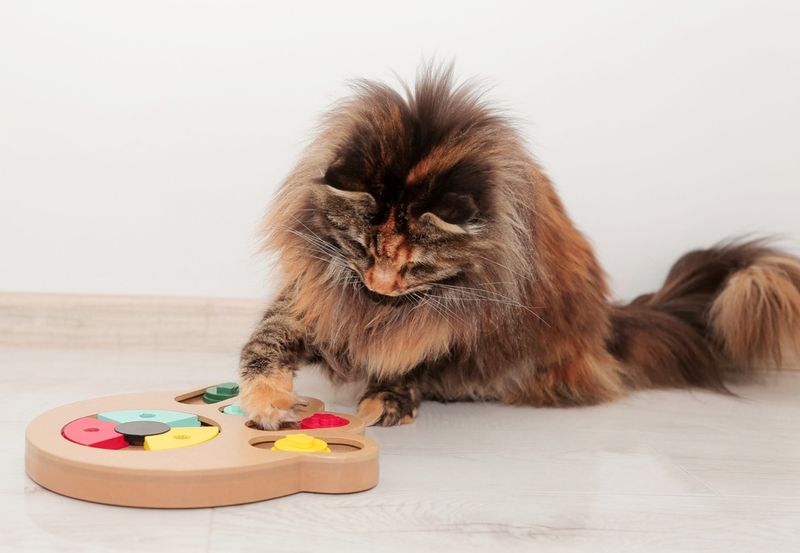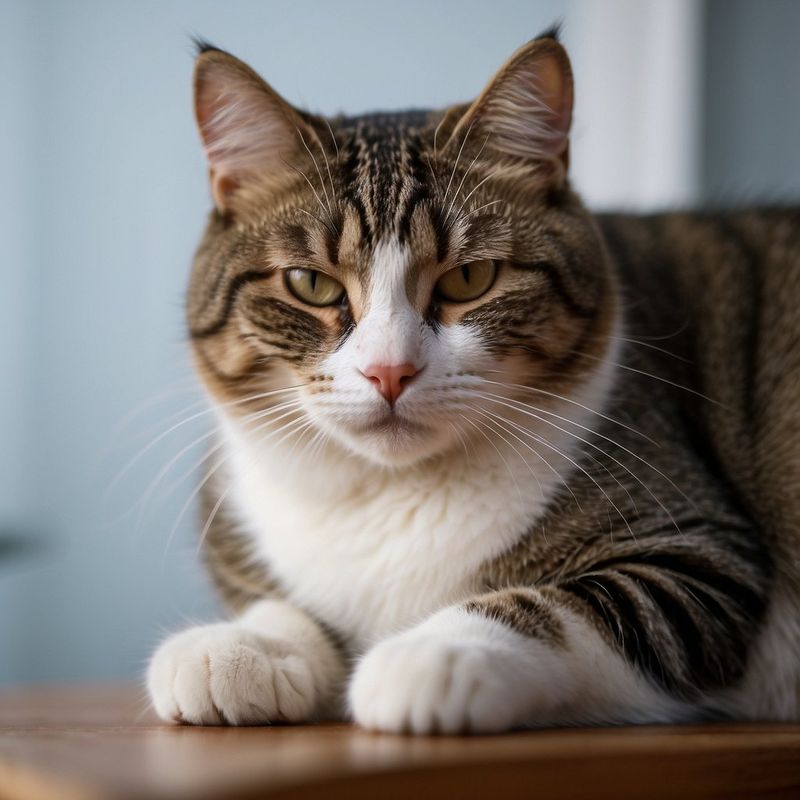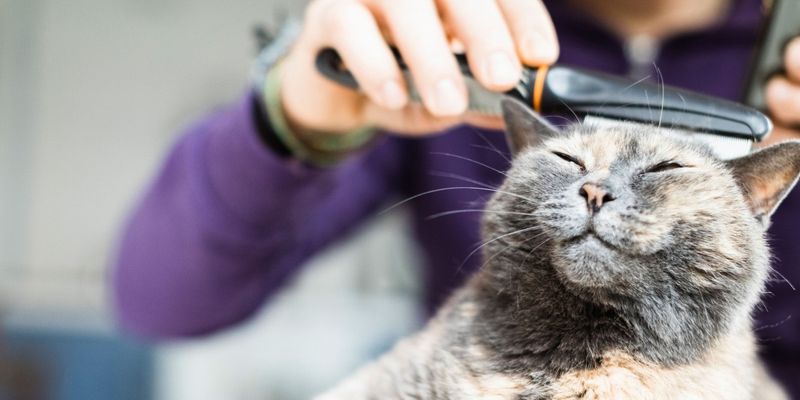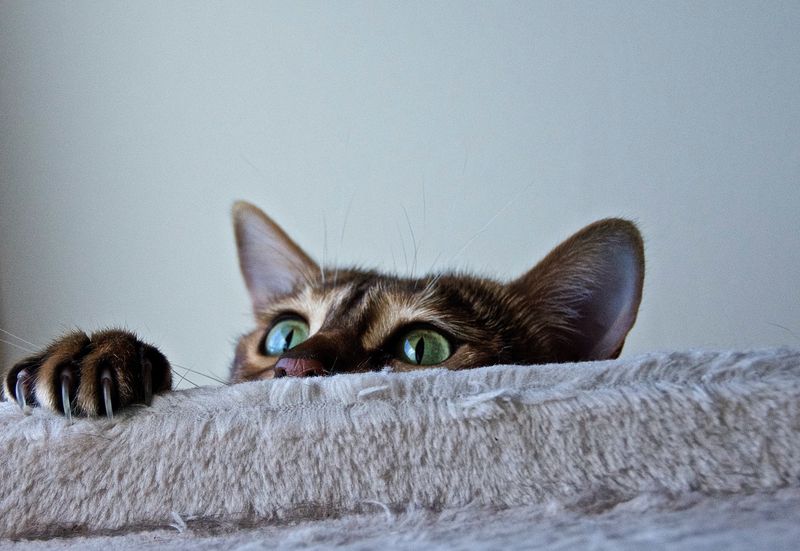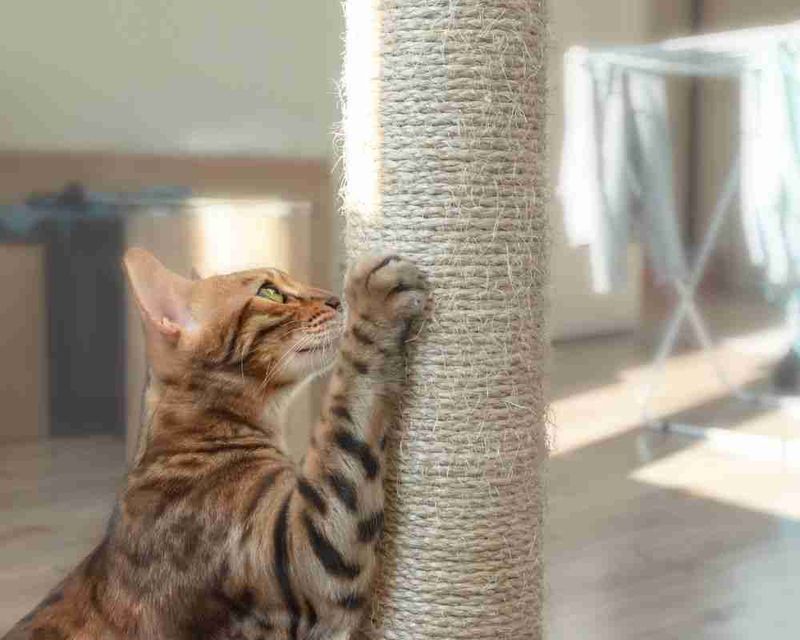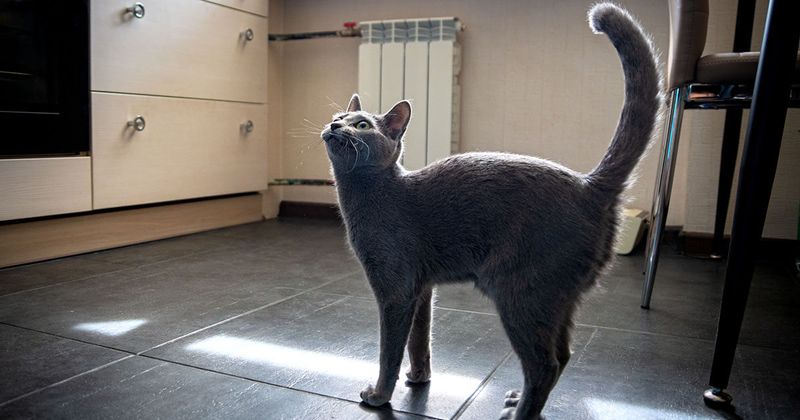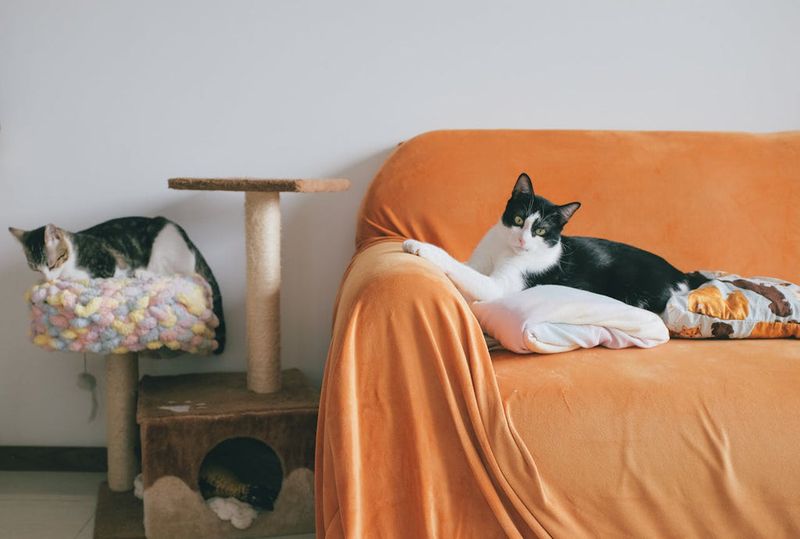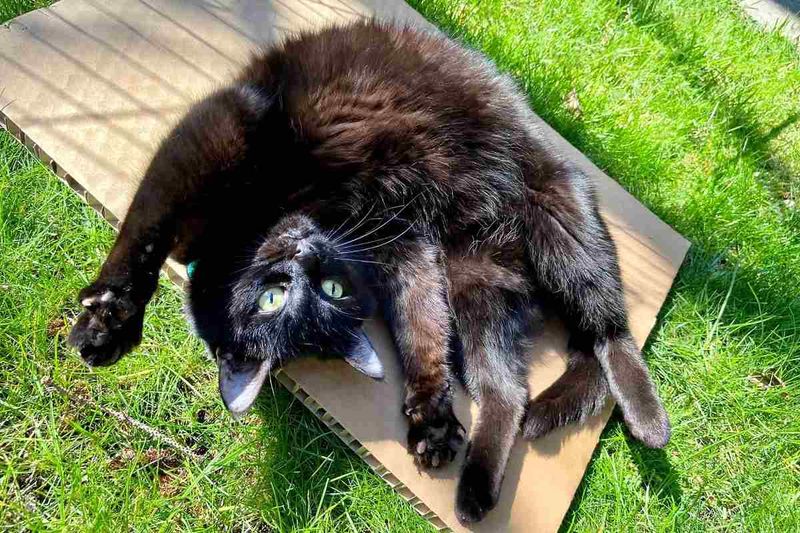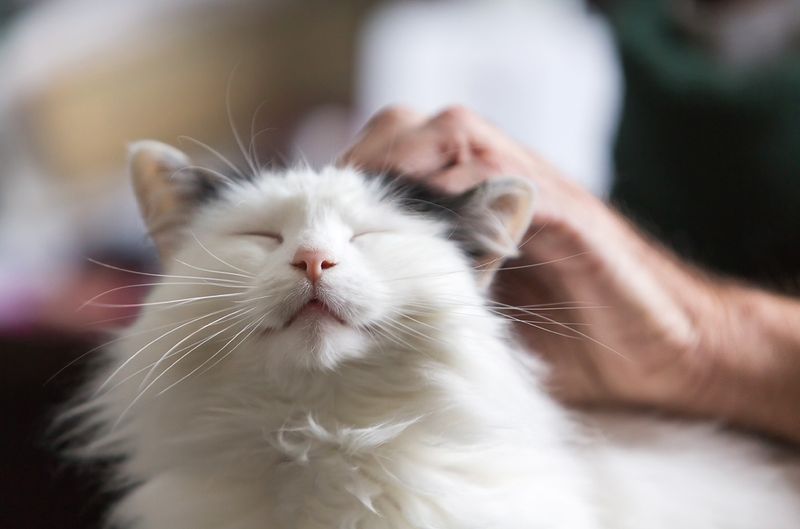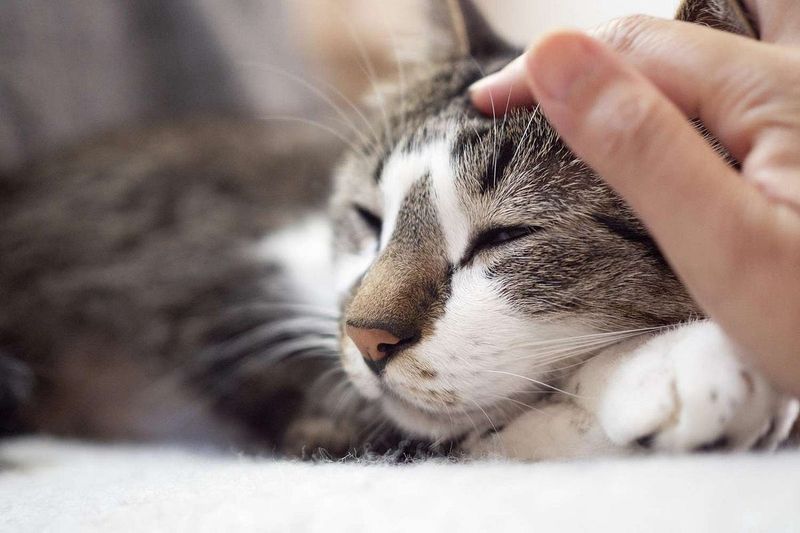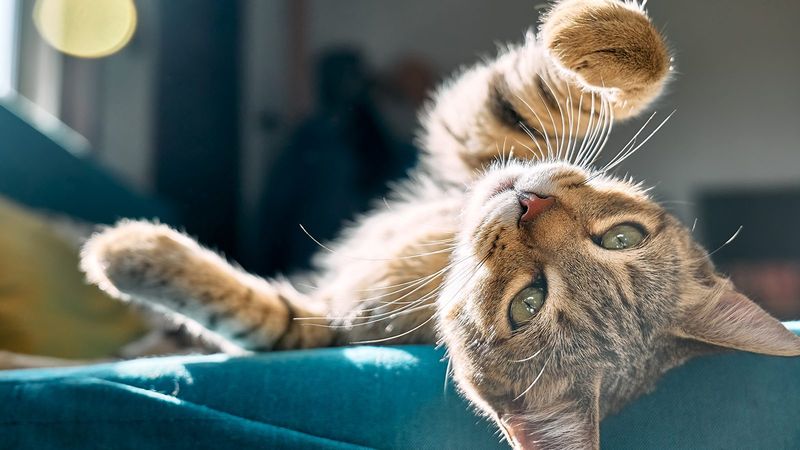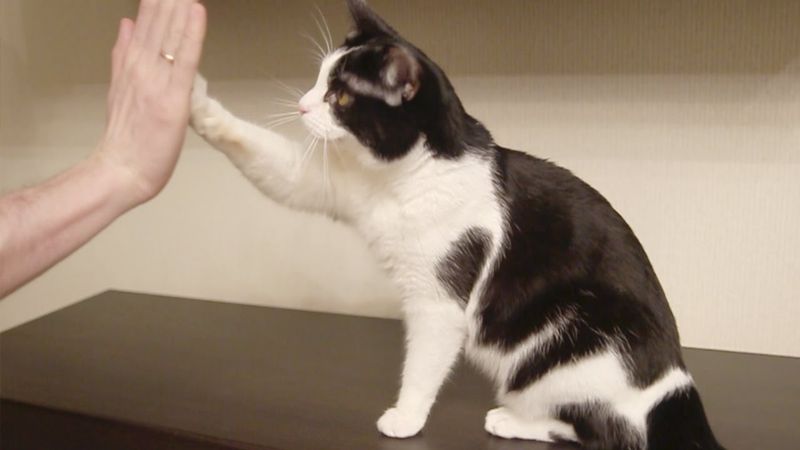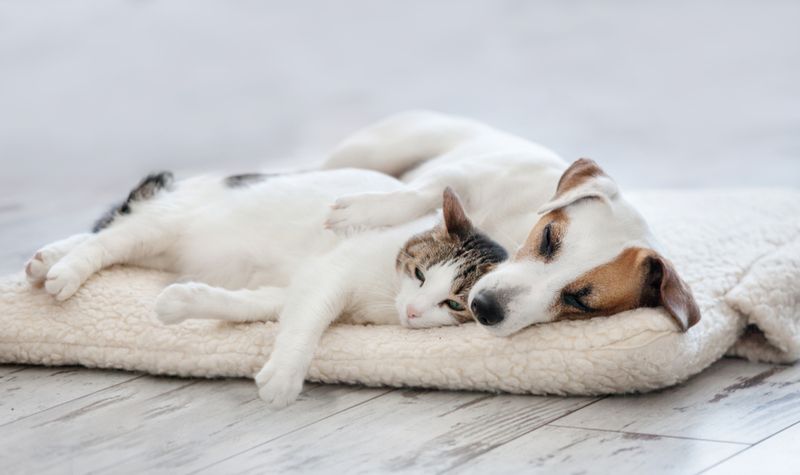📖 Table of Content:
- 1. Deeper Sleep Patterns Emerge
- 2. Vocal Range Expands
- 3. Playtime Becomes More Elaborate
- 4. Eye Contact Becomes Comfortable
- 5. Physical Boundaries Decrease
- 6. Appetite Becomes Regular
- 7. Grooming Sessions Get Longer
- 8. Midnight Zoomies Decrease
- 9. Visitors Become Less Threatening
- 10. Territorial Marking Reduces
- 11. Body Language Opens Up
- 12. Resilience To Change Improves
- 13. Health Problems Decrease
- 14. Exploration Becomes Bolder
- 15. Quirky Personalities Emerge
- 16. Purring Becomes More Frequent
- 17. Sleep Locations Multiply
- 18. Greeting Behaviors Intensify
- 19. Interest In Training Grows
- 20. Bonding With Other Pets Deepens
Cats thrive when they feel emotionally secure in their environment. A stable and predictable space supports their sense of calm. Without perceived threats, cats are more likely to display natural behaviors and explore their surroundings.
Emotional safety goes beyond physical comfort. It involves consistency, gentle interactions, and a calm atmosphere. Over time, these factors help build trust between a cat and its human companions.
When a cat feels secure for an extended period, noticeable changes begin to emerge. Stress-related behaviors often decrease, and overall health can improve. The bond between cat and caregiver also tends to deepen significantly.
1. Deeper Sleep Patterns Emerge
Emotional security allows cats to let their guard down during sleep. You’ll notice them resting belly-up or curled next to a human, fully relaxed and trusting.
This type of deep sleep is crucial for their overall health. Cats naturally remain alert for danger, but emotionally safe cats can fully relax their guard. The difference is visible in their body language – from tense, ready-to-flee positions to completely relaxed postures that show they trust their environment enough to be at their most vulnerable.
2. Vocal Range Expands
When cats feel safe, they often develop more ways to communicate. Along with meows and purrs, they may add chirps, trills, or even special sounds just for their humans. This happens because they feel confident and unafraid to express themselves.
Some cats will develop morning or evening ‘conversations’ with their trusted humans. Researchers have found that cats and their owners often develop private languages, with sounds that are used exclusively within that relationship – a sign of deep emotional security.
3. Playtime Becomes More Elaborate
When cats feel emotionally safe, their play becomes more elaborate and imaginative. They’ll dream up rules, initiate fun, and even invite you to be part of their fantasy hunts. Don’t be surprised if your cat drops a toy at your feet or turns your hallway into an obstacle course.
This playfulness stems from feeling safe enough to express their natural instincts without fear. Many cat behaviorists note that secure cats will even incorporate elements of trust into their play – like running away expecting to be ‘chased’ then doubling back, showing they know it’s all in good fun.
4. Eye Contact Becomes Comfortable
In feline communication, prolonged eye contact often signals aggression or dominance. However, when a cat feels emotionally secure, it may hold your gaze or offer a slow blink — a non-verbal cue of trust and affection. This shift indicates they no longer perceive you as a threat.
Many cat owners describe this connection as deeply moving. The slow blink communication becomes a regular part of your relationship, with cats initiating this affectionate gesture when they’re feeling particularly content and safe in your presence.
5. Physical Boundaries Decrease
At first, your cat kept their distance—watching, waiting, unsure. But over time, with quiet routines and gentle consistency, things began to change. One day, you look down to find them curled against your leg as you work, or purring softly in your lap. It didn’t happen overnight. It was earned.
The cat learns that closeness doesn’t equal danger. Many cat guardians report that their once-distant rescue cats eventually became the most physically affectionate pets they’ve ever had, once they felt truly safe. This change represents one of the most rewarding aspects of creating emotional safety for cats.
6. Appetite Becomes Regular
Stable eating habits are a sign of a secure cat. Anxious behaviors like gulping or skipping meals often fade with emotional trust, giving way to a relaxed, consistent routine. Food security reflects emotional stability in feline life.
When they know their environment is stable, their relationship with food stabilizes too. Cat nutrition experts point out that many eating disorders in cats stem from emotional insecurity. A cat who feels safe will typically eat appropriate portions at regular times, making weight management and health monitoring much easier.
7. Grooming Sessions Get Longer
Secure cats spend more time on personal grooming, often in visible locations rather than hidden away. This extended grooming shows they feel safe enough to be vulnerable during this necessary but attention-consuming activity. You’ll notice your cat cleaning themselves thoroughly in the middle of the living room rather than under the bed.
They might even groom in unusual positions, showing complete comfort. Mutual grooming also increases, with emotionally secure cats more likely to lick their human’s hand or hair – their way of including you in their family grooming circle.
8. Midnight Zoomies Decrease
Those frantic middle-of-the-night energy bursts often decrease when cats feel consistently safe. While all cats have natural activity cycles, the chaotic 3 AM sprints are frequently linked to pent-up energy from stress.
Emotionally secure cats distribute their play and energy throughout the day. They’re more likely to adjust their schedule somewhat to match their humans’. Cat behaviorists explain that extreme nighttime activity can be a sign of anxiety or insecurity during daylight hours. As cats feel safer, their activity patterns often become more balanced and less disruptive to household sleep.
9. Visitors Become Less Threatening
Your cat once fled at the sound of the doorbell—gone in a flash, not to be seen for hours. But now? They peek from the staircase or perch quietly nearby, curious but calm. Trust has changed them. And sometimes, they even come forward, weaving through legs and greeting guests like a host who’s finally found their confidence.
This transformation happens because they trust you to maintain the safety of their environment. The key difference is recovery time – emotionally secure cats return to normal behavior quickly after visitors leave, while insecure cats may remain on edge for hours or days afterward.
10. Territorial Marking Reduces
Stress-related behaviors—like urine marking, excessive scratching, or over-grooming—often stem from insecurity. As a cat becomes emotionally secure, these habits tend to fade, signaling improved mental and territorial well-being.
When cats know their space is safe and stable, they don’t feel the need to constantly reassert their presence. The reduction in marking behaviors isn’t just convenient for humans – it’s a sign that the cat is experiencing less internal stress and anxiety, leading to better overall health and wellbeing.
11. Body Language Opens Up
The overall body language of a secure cat becomes more relaxed and open. Tails stay up in greeting, ears remain forward, and whiskers extend naturally rather than flattening against the face. This shift in posture reflects their internal state of calm. Even during brief startles, secure cats return to relaxed postures quickly.
Cat experts consider this open body language one of the clearest indicators of emotional security. A cat who moves through their environment with loose, comfortable movements rather than tense, low-to-ground postures is displaying their confidence in their safety.
12. Resilience To Change Improves
A confident cat won’t lose their cool over a new couch or a change in your work hours. They’ll sniff it out, stretch, and carry on. Why? Because their world isn’t just furniture and feeding times—it’s the trust they have in you, and that’s rock-solid.
They’ve learned that changes don’t necessarily signal danger. Many cat guardians report that their once-skittish cats eventually became quite adaptable after years of consistent care and stability. This improved resilience makes life easier for both cats and their humans during inevitable life transitions.
13. Health Problems Decrease
Long-term emotional security correlates strongly with fewer stress-related health issues in cats. Conditions like over-grooming, cystitis, digestive problems, and skin conditions often improve when cats feel safe. The connection between emotional state and physical health is well-documented in feline medicine.
Chronic stress suppresses the immune system and disrupts normal bodily functions. Veterinarians often note that creating emotional security is as important as proper nutrition for maintaining cat health. The reduction in stress hormones allows the body’s natural healing processes to work more effectively.
14. Exploration Becomes Bolder
At one time, your cat stuck to just one room, wary of anything new. But now? They’re boldly leaping onto bookcases, nosing around new boxes, and lounging in unexpected places. Their growing sense of adventure reflects something deeper: trust in their territory—and in you.
The contrast between a newly-adopted cat’s restricted movement and the same cat months later can be dramatic. Emotionally secure cats might use three-dimensional space completely differently, accessing high shelves, tops of furniture, and previously avoided rooms.
15. Quirky Personalities Emerge
One of the most delightful changes in emotionally secure cats is the emergence of unique personality traits. Cats who once seemed generic in their behavior develop distinct preferences, habits, and even what owners describe as ‘senses of humor.’
These personality quirks might include unusual play preferences, specific communication styles, or special routines they create with their humans. They feel safe enough to express their individuality. Many cat guardians report being surprised by the complex personalities that emerged once their cats felt truly secure – from cats who insist on participating in specific household routines to those who develop elaborate greeting rituals.
16. Purring Becomes More Frequent
Secure cats purr more often and in more situations. While purring can indicate various emotional states, content purring has a distinctive rhythm and is accompanied by relaxed body language. This increased purring isn’t just pleasant for humans – it actually benefits cats physically. Purring vibrations fall within a frequency range that promotes healing and bone density.
Cat owners often notice their cats purring in new contexts as they become more secure – not just when being petted, but when entering a room where their human is, or even when simply relaxing nearby, indicating a general state of wellbeing rather than just a response to specific stimuli.
17. Sleep Locations Multiply
A notable sign of feline emotional security is an increase in the variety of resting locations. Instead of isolating themselves in concealed or protective spots, secure cats distribute their sleep across open, visible areas—reflecting a broadened sense of territorial safety and reduced vigilance.
The variety of sleeping spots also tends to include more exposed positions over time. A cat who initially only slept under furniture might eventually be found sprawled across the middle of the bed or couch in full view.
18. Greeting Behaviors Intensify
You open the door and there they are—trotting toward you with a chirp, brushing your legs like they’ve rehearsed it. It’s not just routine; it’s ritual. Over time, your cat has learned you always return—and now they’re thrilled to prove it, in their own quirky, loving way.
They trust that departures aren’t permanent and returns are worth celebrating. The consistency of these greeting behaviors becomes a reliable indicator of emotional security. Even cats who aren’t typically cuddly might develop special homecoming rituals that demonstrate their bond and trust in the relationship’s permanence.
19. Interest In Training Grows
Give a confident cat a clicker and a treat, and you’ve got a furry student ready to shine. Whether it’s high-fives or hoop jumps, they’re in it for the challenge, the praise, and the joy of learning with someone they trust completely.
Cat trainers report that cats with long-term emotional security are significantly easier to clicker train, harness train, or teach tricks to. Their confidence allows them to focus on the task rather than scanning for threats or escape routes.
20. Bonding With Other Pets Deepens
Emotionally secure cats often form surprising bonds with other household pets. Dogs, rabbits, or even birds might become companions rather than threats or prey. These cross-species relationships develop because the cat feels secure enough in their position that other animals don’t register as competition. Their basic needs for safety and resources feel guaranteed.
Many households report that after months or years of established security, formerly aloof cats begin sleeping next to the family dog or grooming other pets. These relationships showcase how emotional security allows cats to expand their social connections beyond what we typically expect.
